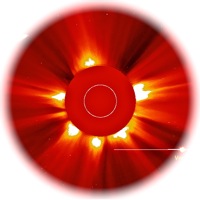Astronomical object
Astronomical objects are significant physical entities, associations or structures which current science has confirmed to exist in space. This does not necessarily mean that more current science will not disprove their existence. Some astronomical objects, such as Themis and Neith are, in light of more recent findings, considered not to exist at all. Others, like Pluto and Ceres, prove to be of an entirely different nature than first expected. In these cases, the scientific community must come to a consensus as to the new status of these objects. Obviously, not all scientists will agree; this gives birth to fringe science. However, fringe science is not always bad science. Some of our most fundamental scientific theories, such as the superstring theory and plate tectonics, were once considered fringe. Even in the mainstream community, new ideas are constantly changing the way we view the universe at large. Astronomical objects thought to exist based on scientific evidence are considered hypothetical.
Astronomical objects can be easily confused with "astronomical bodies". The term "body" indicates a simple object, such as a planet. These terms differ from "celestial objects" and "celestial bodies" only in that the latter terms do not include the Earth. The table below lists the general categories of objects by their location or structure.[1]
